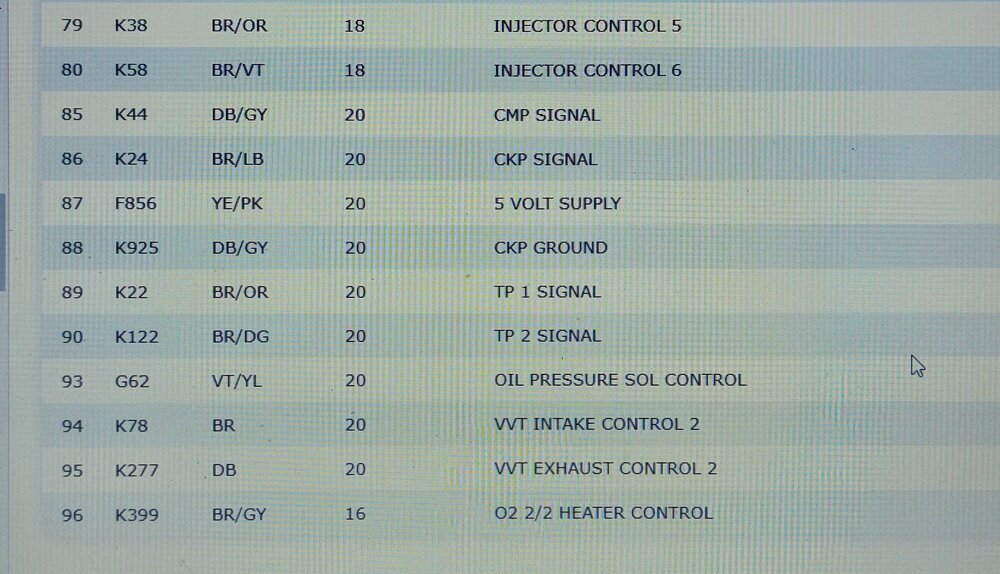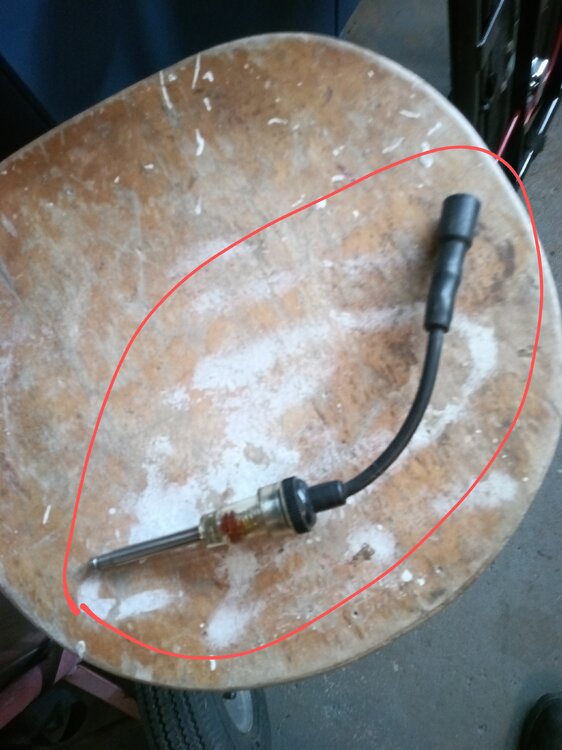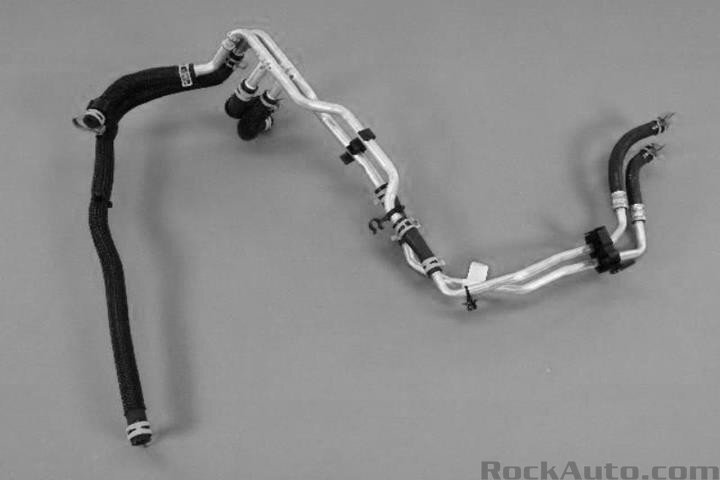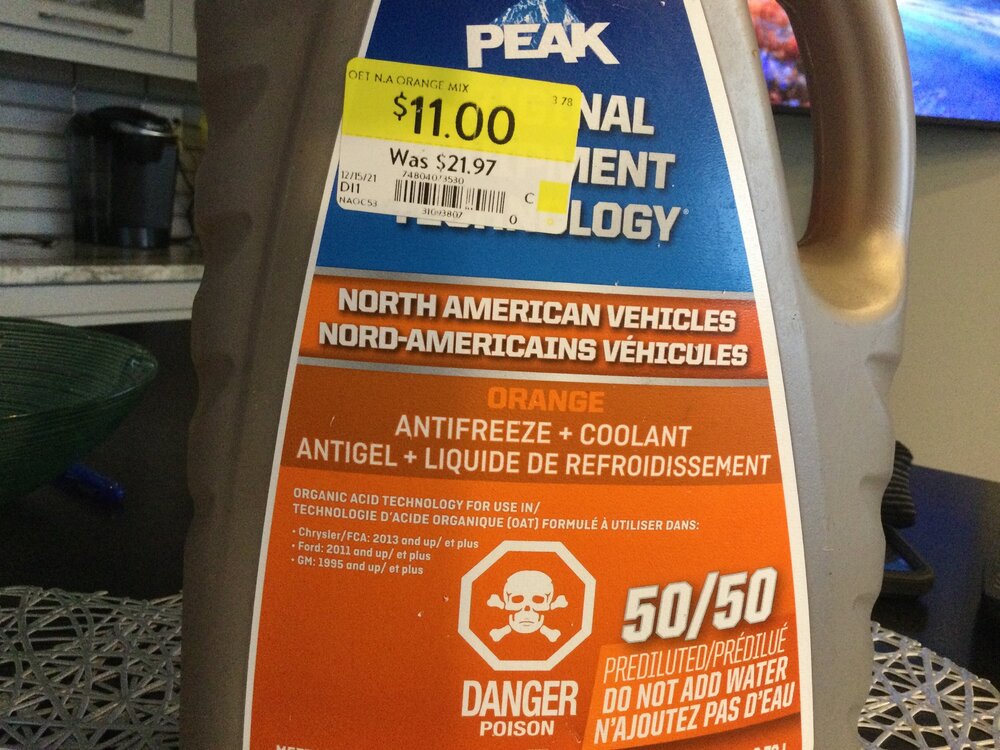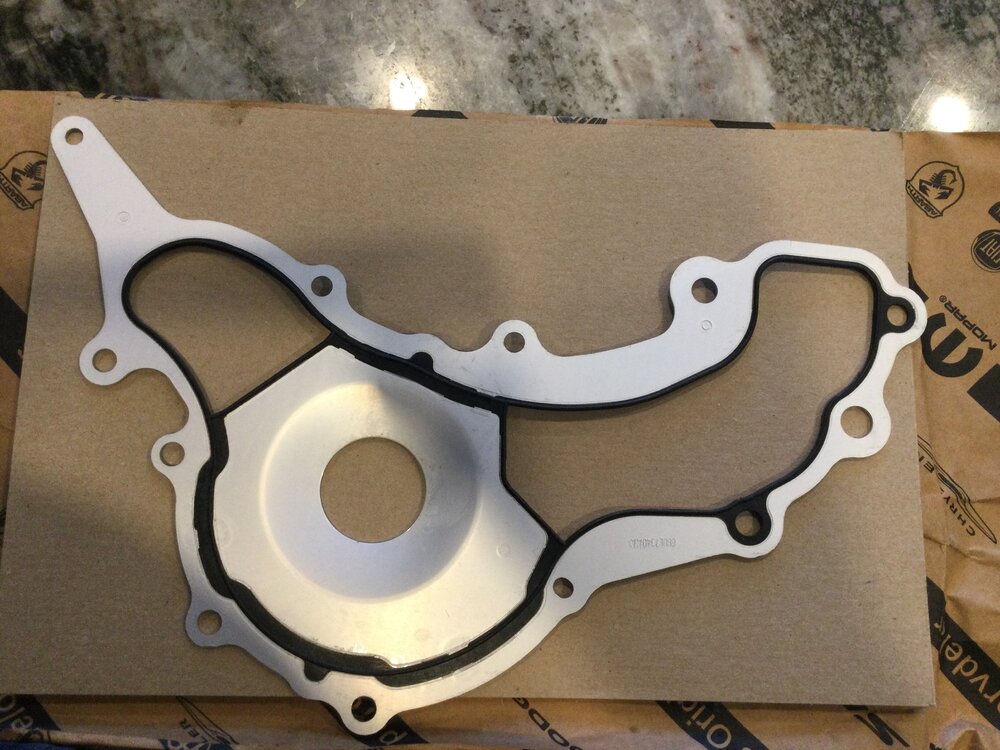-
Posts
1,829 -
Joined
-
Last visited
-
Days Won
186
Content Type
Profiles
Forums
Gallery
Everything posted by John/Horace
-
He said he already replaced the battery sensor. Maybe he didn’t clear codes since. He is not in salt belt I think, but cleaning up grounds is never a bad thing. From wiring diagram it’s a three prong plug on crank sensor. Two out of three wires you can test at the plug, ground and 5 volt reference supply are testable, the ckp return signal, a brown light blue wire to #86 pin can’t really test. Could also test complete ground path from crank sensor ground pin right back to #88 pin on pcm module for continuity and resistance.
-
There are two wires in the crank plug harness that feed the sensor, I assume . If it's three then one is a ground wire, which we will test later. One is the 12 ish volts from battery coming in, the other is the pulsed 5 volt signal going back to the ecm (pin 86 on ecm main connector plug). Both needed to run engine. Unplug cps plug first, then get ignition to run position, make sure one wire on cps plug is getting very close to battery voltage. Report back what voltage is. Turn off ignition, put cps plug back on the sensor again. Can't remove ecm plug to trouble shoot, ignition won't come on with plug removed. Need to do what is called a back probe. Very thin piece of wire or paper clip is used to see what voltage is. Some mechanics poke sharp meter probe through wire insulation, then dab with atv silicone afterwards. To back probe slide paper clip into cps harness plug beside each wire and get a voltage measurement with ignition on. Do same thing at 88 pin ecm/pcm end for the 5 volt output going to pin #86. If voltage is dropping through harness or bad cps plug you will see it turn up as a low or no voltage measurement at pin #86. Not hard to lose a 5 volt signal via pinched wire or dirty connection etc. Even bent pin.
-
You’re pics of bearing install would be nice if you have them. I found torque specs for mounting bolts on either end, still looking for hanger bearing, but it’s not as critical really. Ignore wrong pics below, actual torque specs look correct. This site keeps pushing ads into things. Dodge Journey: Electronically controlled clutch Dodge Journey Service & Repair Manual / Differential and Driveline / Electronically controlled clutch REMOVAL Fig. 95: Removing /Installing Propeller Shaft 1. Make sure transaxle is in neutral (N). 2. Raise vehicle on hoist. 3. Apply alignment index marks (4) on the rear axle flange (5) and rubber coupler (1). 4. Remove three rear propeller shaft rubber coupler to rear axle input flange retaining bolts (3). 5. Slide propeller shaft (2) back off rear axle input flange (5) and move out of the way as needed. Fig. 96: Electrical Connector At ECC 6. Unplug the electrical connector at the ECC. 7. Remove the mounting bolts at the ECC. 8. Remove the ECC. INSTALLATION Fig. 97: Electrical Connector At ECC 1. Make sure transaxle is in Neutral (N) position. 2. Raise vehicle on hoist. 3. Install the ECC. 4. Install the mounting bolts at the ECC and tighten to 60 N.m (44 ft. lbs.). 5. Connect the electrical connector at the ECC. Fig. 98: Removing /Installing Propeller Shaft 6. Align marks (4) on propeller shaft rubber coupler (1) to rear axle input flange (5). 7. Install three rear propeller shaft to rear axle retaining bolts (3) and tighten to 58 N.m (43 ft. lbs.).
-
Problem with CPS sensor output is that it is “ a series of repetitive electrical voltage impulses generated by a a sensor and rotating shaft”. So regular ohm meter not good enough, osiliscope or high tec scanner needed to measure. Or keep trying learn procedure on diff CPS sensors until one passes. Resistance/continuity tests on harness could help isolate too.
-
Better link with index. http://www.dodgia.com/
-
Welcome to the site. But holy dead thread batman...5 years. It was a useful discussion however. Have also had decent luck with an awd journey, 2014 RT. The key is keeping a close eye on problems that come up. Fixing or monitoring leaks that come up and not wrecking a tranny or diff or engine with low fluid. Turning a small ish repair into a major over haul. Cheers.
- 9 replies
-
- schedule
- fluid change
-
(and 1 more)
Tagged with:
-
Lots of battery sensor related codes, airbag etc but the cps code might be real issue. Did you use a factory sensor or aftermarket when you changed it? CPS sensor does have a relearn procedure, try that first with the sensor that's installed now. Could also remove sensor off old engine which is probably OEM and see if that one is compatible. A pin out diagram gives a list of what each input should be. Signal from cps ends up there, could be wire harness damage and reduced voltage signal to ecm is an issue. There is a pin out diagram on this site. Lots of elect plugs worked on during engine swap, bad plug or poorly seated plug can cause a lot of trouble shooting grief.
-
https://drive.google.com/file/d/1zX8rfowBmx1KZpx7zNHQENgcxjFnDjuw/view?usp=sharing Somebody posted this, worked last week. Tricky to navigate if you don't have right device, 5,400 pages of info.
-
Get a spark tester on a plug, even a second one in case coil issue. Make sure there is spark. If cam sensor plug only has one wire by design, I wouldn't worry about. But most sensors running on 5 volts like you have measured. What year is the 2.4 donor engine. Journey is 2009-2018 yrs. 5rebel9 on this site mentioned older 2.4 version of this engine having a different crank sensor set up, something about the reluctor ring location. Search it out or ask him. Donor needs to be very close in age to the 2014 orig engine to be compatible. If there is spark there and manual fuel added not firing. Move on to compression then timing. Pic of cheapo spark tester.
-
I’m pretty sure it wouldn’t. Would Set a code and a light on dash, battery warnings. I’m assuming it the 3.6 not 2.4, you haven’t said which. Car will run with battery sensor unplugged, it sends current reading to ecm helps control alt. No spark is usually CPS sensor. The old engine is worn out from use, it didn’t just stop starting? You have all wire harness plugs properly seated. No open plugs not used. Easy to have a bad pin on a plug, check each individual plug with a multi meter. If turning over slow, clean up main grounds, boost with a second battery if needed.
-
Turn on four ways and walk around back of car. Should be flashing both sides, can drive like that for short trips. Could be fuses switches or wire harness. Need a multi meter and some basic elect knowledge to trouble shoot. Sometimes it’s grounds that are bad, not power supply. Fuse check first, then start cleaning up ground wires and dirty connections under hood. Both strut towers have multiple ground wires mounted under hood. Sand to bare metal and use light film of dielectric grease. Even the remote jump wire hook up coming off battery needs clean up sometimes…you are in the salt belt!!
-
Most of the time just alphaobd with scanner can enable. If Sirius radio optioned pretty much guaranteed antenna etc is all there but both remotes programmed by alphaobd still needed. Remote requires an extra button that triggers with double click. Like in pic. It is an old school 315 MHz (unlike Asia and europe who use 433.9 and 868 MHz) set up so range limited to around 100 metres or 330 feet. Still handy to have.
-

Have to love the extreme cold!
John/Horace replied to 5rebel9's topic in Electrical, Battery & Charging
Wow that’s cold. We maxed out at -8F or -22C that night. Had to start Journey in morning, it made noises I hadn’t heard before and it has expensive 5w20 oil in it. Wished I had plugged in our block heater (cdn order Journeys often came with them) but nearest outlet is far away. Battery is only a year old, so no issue there. My local parts recycler sells used batteries for reasonable cash. I look at the manufactured date labels on batteries first…if they have them, then use my old school battery load tester on the newest two or three. If I give him my old DOA battery he credits that too. Amazing the price on new ones right now. You will like working on the 2.4 in the Journey. Lots more room under the hood so repairs are faster. Have serviced daughter in laws 2012 for 7-8 yrs now. Not great power and only a 4 speed automatic, but as you know …simple is good on older cars. pic of local Cdn bone yard , Journey section up to 8 vehicles now, and Harbor Freight $20:(yeah bought in down south 15 yrs ago) load tester. -
It’s a very critical component of vehicle and labor and glycol will be more than the part. Dorman(US based manufacturer) is the first company to bring out the aluminum unit; which is probably China made. But to their specs. I know people without trouble running a Dorman for a few years now…like 5rebel9. I like products from RockA, I have no affiliation with them but have used them for 10 yrs now. Most accurate jpgs fast shipping and competitive prices (easy to find 5% discount code on retailmenot). Their main China brands are Shermar (12 month warranty) and SKP (24 months) while Dorman is lifetime warranty (no labor obviously). China brands are 25-30% cheaper than Dorman. I have used rocka China brands, generally ok. But not dealer quality for sure. There was no alum in 2018; when my oem failed; I bought over priced dealer plastic unit to make sure it was a one and done…on a daily driver car. It’s stilling working after 80k miles; but I expect to have to replace it eventually. My daughter is getting car next year. Free advice as they say is worth everything you pay for it. I would not buy the cheapest random part from a possibly sketchy supplier. Paying second labor/glycol downtime cost would not be great. But after Xmas…money is always tighter, I get it. Your call.
-
Sounds frustrating. It might just be a steady drip on one of the connections, must be close to 20 clamps. Below is pic of rear heat supply return lines. Leak would likely be lower down on subframe if that’s cause. If you spray off glycol, be gentle don’t spray close up. Easy to damage stuff under hood.
-
Older HOAT was clearly orange newer OAT is called orange but yeah sometimes closer to red or purple. Its the word OAT that matters , or OAT compatible, not the color. I prefer using real OAT to avoid compatible/universal risk (at least in my mind). Owners manual in 2014 says OAT so will your 2017. The purple is not saying OAT on it that I see. Spec is Chrysler MS7170 or MS9769 or SAE J1034. You will be dumping it soon to fix leak anyway, universal short term shouldn’t be issue.
-
You should have OAT in system from factory and it’s actually orange color . This is what I use, the original since 2013 OAT coolant, not HOAT ! I prefer to stay away from universal stuff. Safest is dump and flush and refill with same kind after leak fixed.
-
You have the right guy responding to you, 5rebel9 has more 3.6 experience than anyone else on the site. Top of engine will collect a bit of oil even from oil filter changes. If oil cooler has a real-oil leak, you can wreck engine quite fast. Will pour quickly out on driver side of engine compartment because that end is open more. Glycol would also be similar. I had glycol drip at front of engine below pump pulley, just before 100k miles. That is usually pump bearing seal failure, turning pulley without belt it was quiet and no excess play. But I bought new pump and aluminum style gasket anyway. Turned out small section of shim gasket had corroded away and created the drip, pump was fine (not common fail on 3.6 engines, esp at 100k). Changed it anyway after spending 2+hrs taking apart. No glycol issue since, changed thermostat (a wear item) since system was emptied out. Oil cooler failed 20k later, only oil leak occurred. Up to around 2012 HOAT was the orange fluid, it’s now all OAT organic acid tec and purplish orange color. Not compatible don’t mix them. Can gel up heater cores if wrong fluid used. Clean up as much fluid as you can and run engine with beauty cover off, clean cardboard under engine. Look for main source. Van has diff cooling lines than Journey. But plastic tee that feeds rear heater core is known to fail early, oil cooler lower orings could also start weeping a bit. First pic is a new water pump gasket alum shim.
-
Welcome to the site. Search around the posts, lots of links about android head units. There is no plug and play unit available. Find a shop that installs aftermarket units. Let them supply and install replacement. They will have figured out the quirks of what they are selling. Soft button features like heated steering, rear 120 power supply etc tricky to transfer over.
-
Rockauto (most accurate on line parts site) shows the avenger and Journey in that year with identical CPS sensor, throttle body etc in 2010 model year. If your vehicle and ecm computer are within even a few years I think it should be fine. This vehicle until recently was running before engine died, correct ? If you got the new engine complete with all sensors; you could paint mark CPS and ETB on old engine and move over parts, one at time. Clear codes and observe what happens. Even if one or two bad plugs or coils, engine should still fart and half ass run on the other cylinders if there is spark and fuel and compression.
-

2010 Dodge Journey keeps draining battery
John/Horace replied to FedUp7's topic in Electrical, Battery & Charging
https://www.dodgejourneyforum.com/profile/22067-unclesamautos/ This guy seems legit. Have not personally delt with him, but shipping him your dead unit for a refurb is most cost effective repair. The unit is mounted in dash right underneath steering column. Not easy to get at. There are utube links of people removing it. How long is warranty on dealer repair ? -
There is no carb, you mean down throttle body opening. One of your many codes is throttle body, they have plastic gears so are sensitive, down plugs is better. Is the replacement engine a known decent unit? Lots of nonsense codes can come up with a no start problem. Two way scanner could trouble shoot electronic throttle body (known wear item), cam sensors, even map sensor can be cycled with canbus scanner. Parts more expensive where you are so trouble shooting will be worth your while. The cycle is spark, fuel, compression and timing. Common wear items on 2.4 is ETB electronic throttle body Hitachi makes OEM unit), cps crank position sensor (not always a code set).
-
Any codes coming up. Is it a 2.4 engine. Can you hear fuel pump coming on? Are plugs wet with fuel.?


